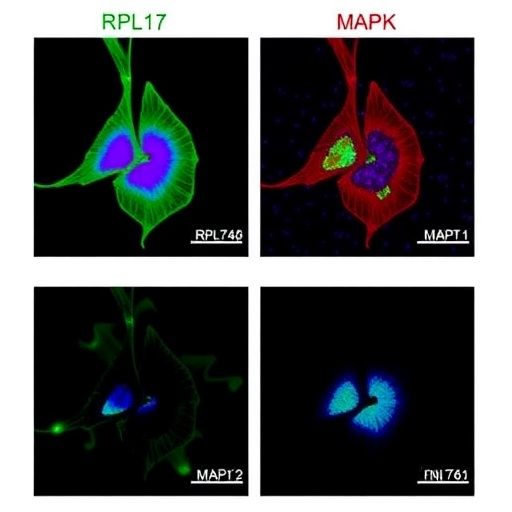
A groundbreaking study recently published in the Journal of Thoracic Disease sheds new light on the limitations of current lung cancer screening protocols, particularly among patients presenting at Emergency Departments (ED) who do not fall within established national screening guidelines. For years, lung cancer screening has primarily targeted specific high-risk populations, largely defined by age and smoking history. However, emerging evidence now suggests that these established criteria may overlook substantial subsets of patients at risk of developing lung malignancies, especially in acute care settings.
Lung cancer remains a leading cause of cancer mortality worldwide, often due to its late diagnosis and rapid progression. Conventional screening models, notably those endorsed by national health agencies, emphasize targeted screening based on heavy smoking history and an age threshold, typically focusing on individuals aged 55 to 80. These models have been rigorously tested in outpatient contexts but have not fully accounted for patient demographics frequenting Emergency Departments, where urgent health needs often overshadow preventive screening efforts.
This recent observational study embarked on examining demographic and clinical factors among ED patients that fall outside the national lung cancer screening parameters yet exhibit notable incidences of lung cancer diagnosis. Unsurprisingly, researchers found that conventional screening guidelines were insufficient to capture these at-risk individuals within the ED setting. The study emphasized three pivotal demographic factors—older age beyond traditional thresholds, female sex, and preference for non-English languages—as critical markers associated with an increased likelihood of lung cancer diagnosis in these patients.
Incorporating older patients beyond the conventional upper age limits into risk stratification challenges existing paradigms that often exclude individuals over 80 years. This is particularly important given the evolving demographic shifts globally, where populations are aging, and cancer prevalence rises in the elderly. Female sex also emerged as a notable risk factor. This contradicts historical gender biases that have primarily associated lung cancer risk with male smokers, underscoring the need for gender-sensitive approaches within lung cancer diagnostic strategies.
Moreover, the study highlighted language preference as a novel and impactful determinant. Non-English language preference may serve as a proxy for cultural, socioeconomic, or access-related barriers influencing health behaviors and screening uptake. This finding calls attention to the structural inequities in healthcare access and the potential of non-traditional factors in refining risk models and improving early detection among marginalized groups.
These insights call for an urgent reevaluation of lung cancer screening frameworks within ED settings. Implementing diagnostic protocols that incorporate demographic nuances could enhance early detection rates, potentially improving patient outcomes. The study advocates for a more expansive, inclusive approach rather than a rigid adherence to existing guidelines forged mostly for outpatient populations.
Clinicians working in EDs face a unique set of challenges when integrating cancer screening activities amidst acute care workflows. The fast-paced environment, compounded by resource limitations and varied patient presentations, renders systematic screening difficult. Yet, this research underscores the importance and feasibility of tailoring screening criteria to the realities of emergency medicine, thereby bridging gaps in cancer detection.
Technically, refining lung cancer screening models necessitates the use of advanced epidemiological tools that can incorporate multidimensional risk factors—demographic, behavioral, and clinical. Machine learning algorithms and predictive analytics could be deployed to develop dynamic, adaptable models targeting high-yield patient subsets within the ED. Integration of electronic health records (EHR) and decision-support systems could automate risk stratification, ensuring timely identification without burdening clinical staff.
Beyond individual risk factors, the study prompts a deeper investigation into the pathophysiological underpinnings that might differentiate lung cancer development in non-traditional patient groups. For instance, why might older females or non-English-speaking individuals present with a higher incidence of lung malignancy outside established screening brackets? Exploring genetic susceptibilities, environmental exposures, and health disparities will enrich our understanding and aid in designing targeted interventions.
Another crucial implication lies in public health policy. Current lung cancer screening policies must evolve to incorporate findings that highlight gaps in reach and effectiveness. Policymakers should consider expanding screening guidelines and instituting culturally competent outreach programs focusing on diverse populations identified at risk. Public awareness campaigns designed in multiple languages and tailored to different communities will enhance engagement and adherence.
The study conducted by Wang, Cheeti, Murray, and colleagues represents a vital step in transforming lung cancer diagnosis protocols. By systematically evaluating Emergency Department populations, their observational research identifies previously underappreciated risk factors and patient subsets that could benefit from proactive screening measures. This paves the way for a more equitable, precise, and effective lung cancer diagnostic pathway.
The incorporation of older age beyond national screening upper limits is particularly illustrative of a broader call to rethink geriatric oncology considerations. As life expectancy increases globally, excluding older individuals from cancer preventive strategies could inadvertently increase late-stage diagnoses. Therefore, this study underscores the urgency of inclusive screening that reflects demographic realities.
Further research is also necessary to validate these findings across diverse healthcare systems and to test the practicality of enhanced screening protocols in the ED. Pilot programs incorporating linguistic and gender-specific screening criteria could provide crucial data on implementation challenges and patient outcomes, ultimately informing national guidelines.
In conclusion, this study propels the medical community to reevaluate and expand lung cancer screening frameworks beyond traditional confines. The integration of age, sex, and language preference as risk markers stands to revolutionize early detection, particularly in vulnerable Emergency Department populations. As healthcare moves toward personalized and precision medicine, such innovative approaches will be indispensable in battling lung cancer morbidity and mortality at scale.
Subject of Research: People
Article Title: Identifying lung cancer in Emergency Department patients outside national lung cancer screening guidelines
News Publication Date: 25-Feb-2025
Web References: http://dx.doi.org/10.21037/jtd-24-1399
References: Wang H, Cheeti R, Murray M, Muirheid TA, McDowell J, Sambamoorthi U. Identifying lung cancer in Emergency Department patients outside national lung cancer screening guidelines. J Thorac Dis 2025;17(2):695-706. doi: 10.21037/jtd-24-1399
Keywords: Lung cancer
Tags: acute care lung cancer diagnosisconventional vs. alternative screening modelsdemographic factors in lung cancer riskemergency department patient demographicshigh-risk populations for lung cancerimplications for lung cancer screening protocolslimitations of lung cancer screening guidelineslung cancer detection in emergency departmentslung cancer mortality and late diagnosisobservational study on lung cancerpatients outside national screening criteriaurgent health care and preventive screening





